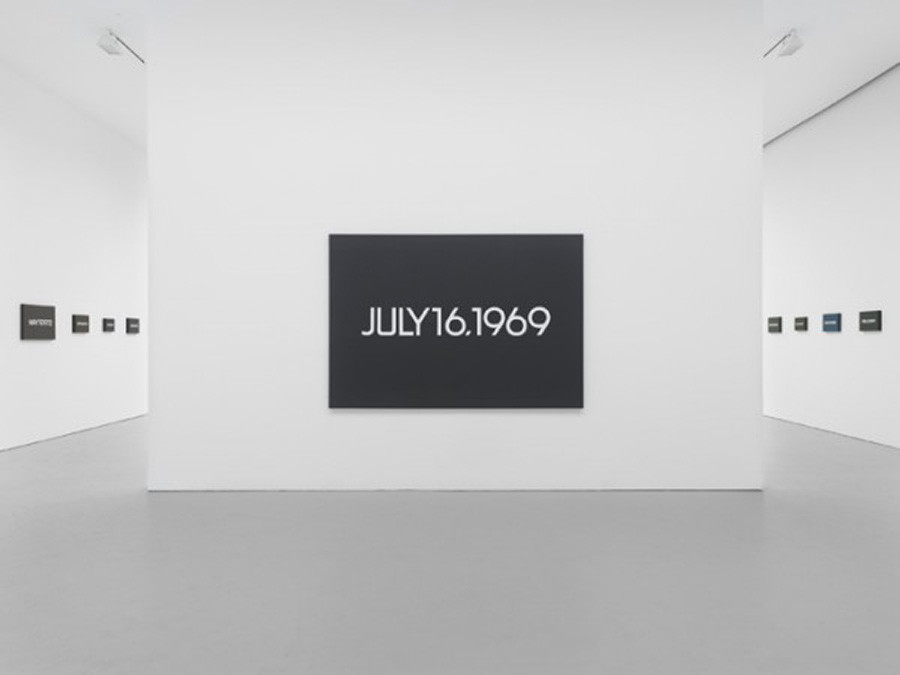On Kawara retrospective stuns with size, scope
On Kawara’s “July 16, 1969” represents the day of the Apollo 11 launch.
March 25, 2015
In 2014, the art world lost Japanese artist On Kawara, an artist famous for his conceptual art based on dates of the year. Kawara’s work features references to dates, whether it be written down, on a newspaper or on a wall-mounted painting of the date. The Guggenheim Museum has assembled the biggest-ever collection of his works from 1964 to present day in an exhibit titled “On Kawara — Silence,” creating a massive timeline of Kawara’s journey through half a century of history.
Because Kawara’s “Date Paintings” hinge on repetition, he created at least one new piece every day for months resulting in a massive collection. The sheer amount of art in this gallery is borderline overwhelming, but it works perfectly for the artist’s creations. His art tries to capture how fleeting time — how days build up without us even knowing. Capturing every day of multiple decades creates an extraordinary sense of breadth, making the viewer feel incredibly small compared to time’s enormity. Kawara seemed to understand his insignificance with respect to time as well, creating a chart of years with a small section highlighted in yellow representing his life.
As the artist intended, the spiraling museum is cut into 12 sections that showcase the staggering variety of his work. Viewers see more traditional art in his early works, dating from 1964 Paris. From there, the works get progressively more conceptual, beginning with the most massive work “Date Paintings,” which features newspaper clippings cut out and placed in a box. “Date Paintings” is one of the most impactful works. It creates a stunning picture of the early 1970s, as Vietnam, the Nixon administration, and racial tension are all charted in his work. Jumping from major news to entertainment to economics creates an intimate look at a world 40 years in the past.
The works that required the most dedication are his postcards and telegrams. As he traveled the world, Kawara sent telegrams or postcards to acquaintances. The telegrams would have a cynical “I am alive” written on them, and also stated what time he woke up at that day. The postcards display pictures spanning the globe and give a sense of Kawara’s extraordinary life.
In addition to these works, an entire section is dedicated to an elaborate collection of codes Kawara created, including a number system, braille and colored dashes, which will presumably never be translated.
In another fascinating feat, the artist created art, consisting of a small booklet with essays and pictures, for 18 different schools. The children were then asked to go through the art with no information from their teachers so that they could make their own interpretations.
These two works are the most fascinating, as they are an attempt to try to understand the meticulous mind that created such an enormous, unprecedented collection.
Though viewers may never truly know the workings of the artist’s mind, Kawara created a massive, strange, engrossing collection that provides an intimate depiction of one artist’s journey through history.
On Kawara’s “Silence” in on display at the Guggenheim Museum until May 3.
A version of this article appeared in the Wednesday, March 25 print edition. Email Carter Glace at [email protected]










































































































































